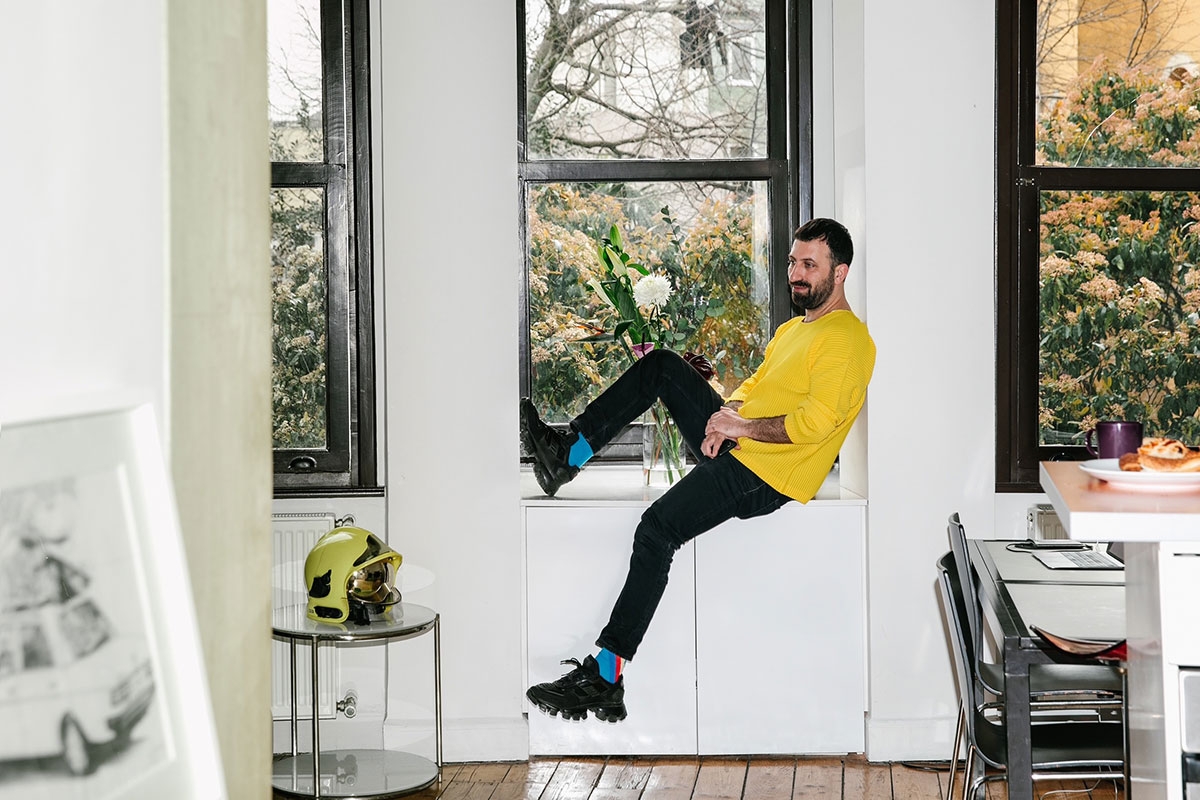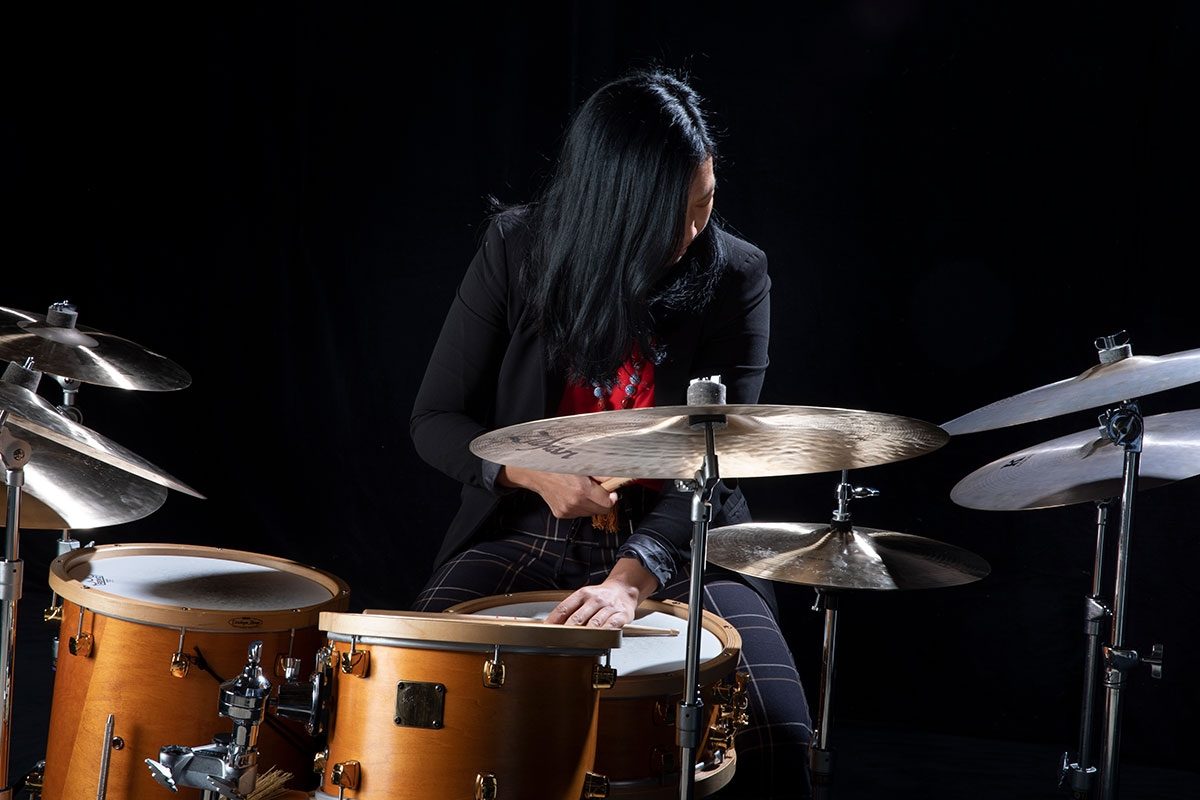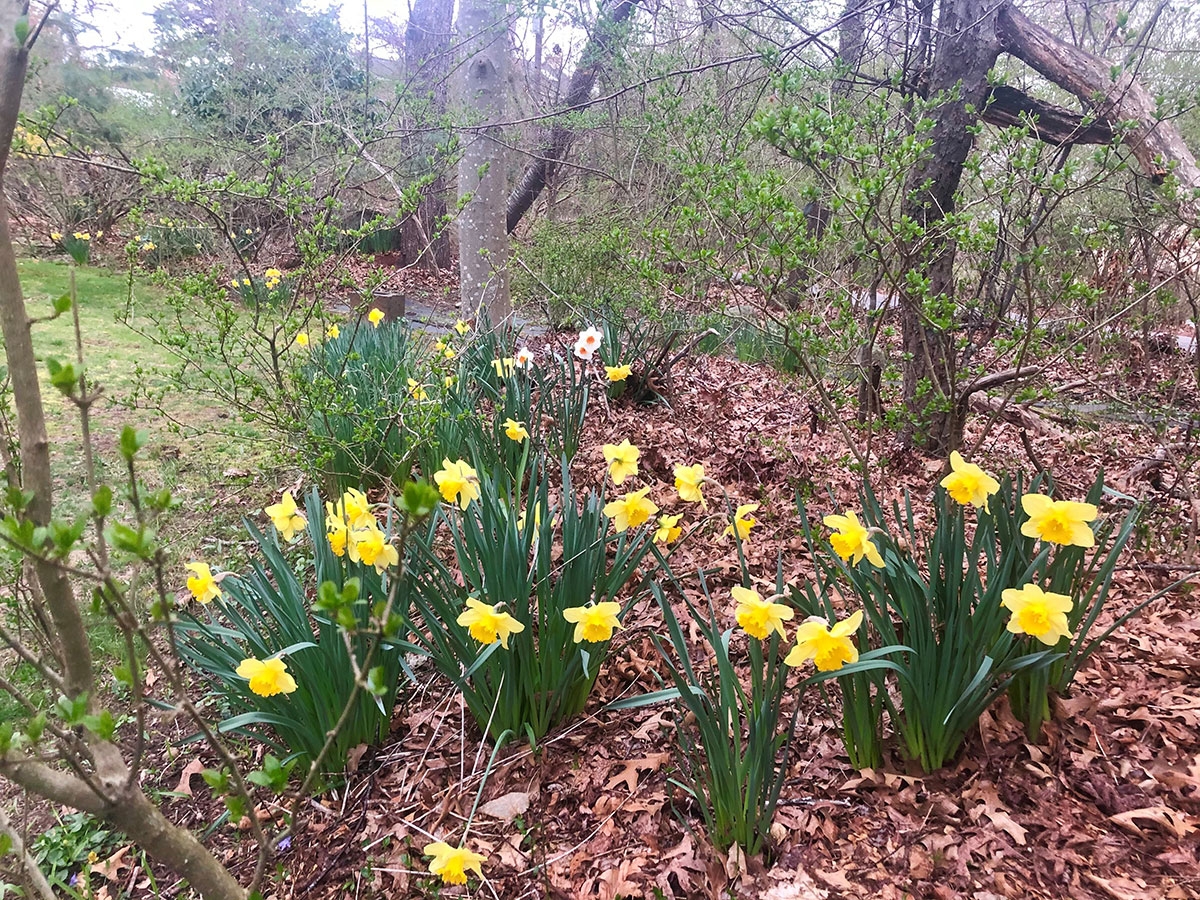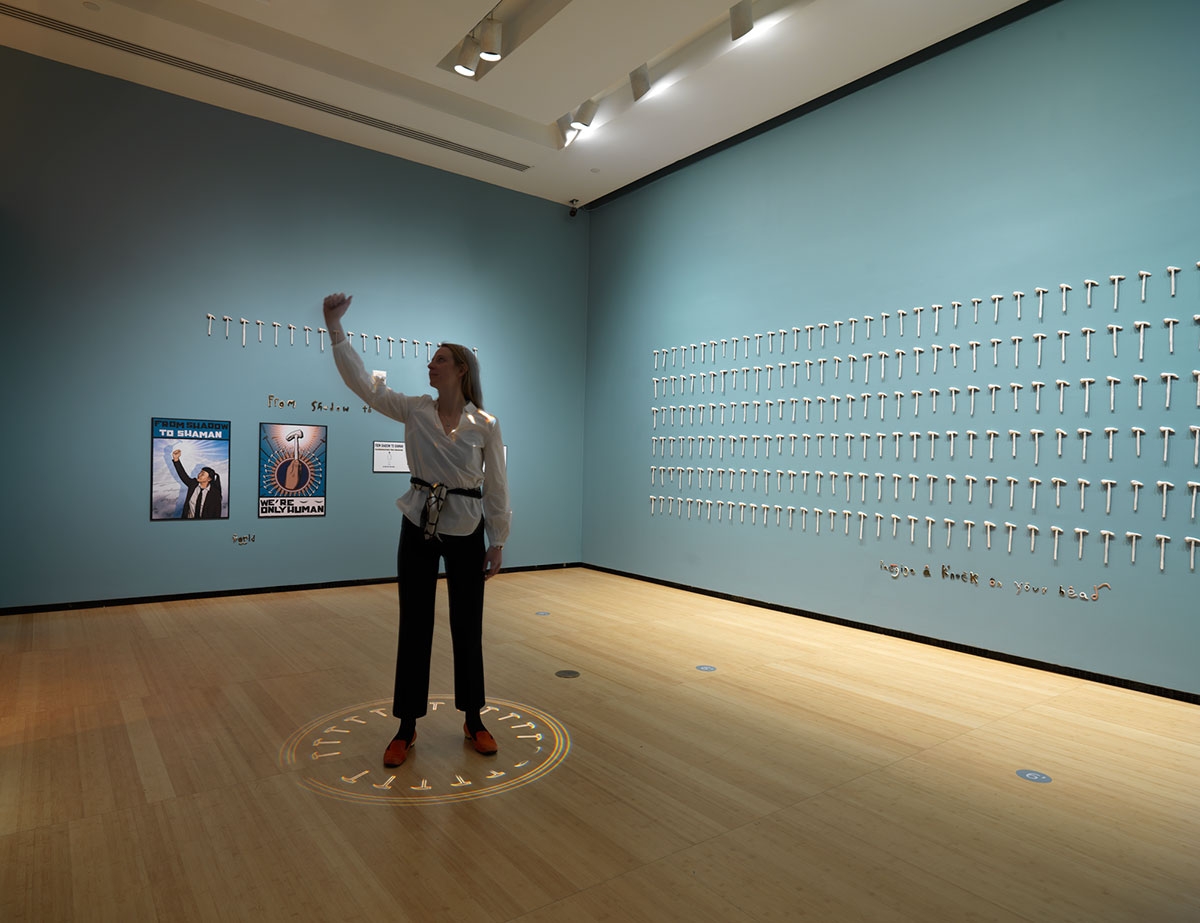
Photograph courtesy of the artist
-
Photograph courtesy of the artist
Dreaming With: anGie seah
In the lead up to the opening of Part 2 of the Triennial, our Dreaming With Q&A series provides an exclusive glimpse into the artists’ lives and studios.
Where have you spent your time during the pandemic?
I have been making music, doing domestic chores and decluttering my home, unpacking old works, cycling, and reading.
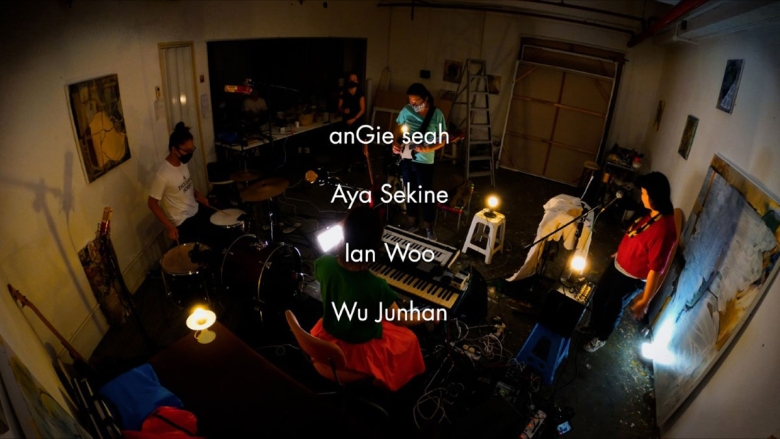
Qianpima. Photograph courtesy of the artist
What books, music, movies, or podcasts have inspired you recently?
Music by my band Qianpima has been very motivating for me (youtu.be/Pwingjytwk0). [It inspires] a sense of collective spirit, making music intuitively with a sole intention to create and improvise without thinking too much.
Music by SsingSsing and Bill Evans.
Books such as 12 Rules for Life: An Antidote to Chaos by Jordan Peterson (Random House Canada, 2018), What I Talk About When I Talk About Running by Haruki Murakami (Vintage, 2009), Tell Them I Said No by Martin Herbert ((Sternberg Press, 2016), and Devotion (Why I Write) by Patti Smith (Yale University Press, 2017).
The David Lynch Twin Peaks TV series.

Scene from the studio. Photograph courtesy of the artist
What are you working on right now?
Starting this year, I will be working on a multi-year art project on mental health with the Singapore theatre company DramaBox. Taking a multi-disciplinary approach, the program will include participatory performances, interactive art installations, and public workshops.
I’ve been researching the spiritual, poetic, and intangible aspects of the human voice. I am planning to revisit the dragon kiln, a historical site in Singapore, and repurposing it as a temporary space for sound recording and exploring its acoustics by activating the space with vocal experimentation. In 2022, I aim to present an exhibition of live performances, art installations, and ceramic works in the kiln space using solar energy to generate the exhibition. I hope to collaborate with craftspeople, musicians, and sound engineers and work towards this production.

Clay texts in progress. Photograph courtesy of the artist
What artist or work of art has most recently had an impact on you?
The teaching and philosophy of a semi-legendary Buddhist monk, Bodhidharma, who lived during the fifth or sixth century [and was a] founder of Zen teachings and the Shaolin school of Chinese martial arts.
What are you most looking forward to in 2021?
I hope international borders will open and people can travel once again. I [would] like to look at the clouds from the plane again.
What do you want viewers to take away from experiencing your work in the Triennial?
I hope viewers can experience a sense of peace and poetry in my work. To remember the experience and embrace a special moment in it. And everyday life can be filled with wonderment and awe.
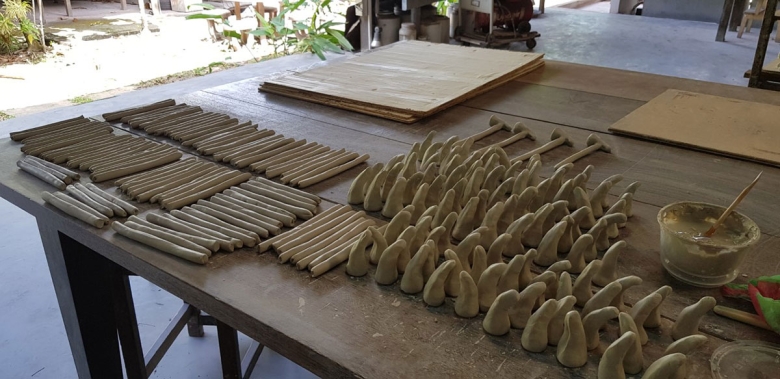
Hammers in the making. Photograph courtesy of the artist
Are there any fun facts about your practice or your work in the Triennial that you would like to share with readers?
While I was planning my instruction guide, I imagined myself as a martial artist practicing her body movements in various formations.
Each hammer was handmade by me. I was in a factory-working mode [while] making hammers. Repetitive actions allow me to focus very well. I made 100 hammers per day and created 700 pieces in a week [working] from 9 a.m. to 5 p.m. with half-hour breaks.
The background music from my video piece was created by my band. This track is called “Introductions.”
I was my own model and posed for the poster illustrations and instruction guide.
I felt rather relieved that I had completed the hammer clay pieces three weeks before the COVID-19 lockdown in Singapore began.
